Elevate your local knowledge
Sign up for the iNFOnews newsletter today!
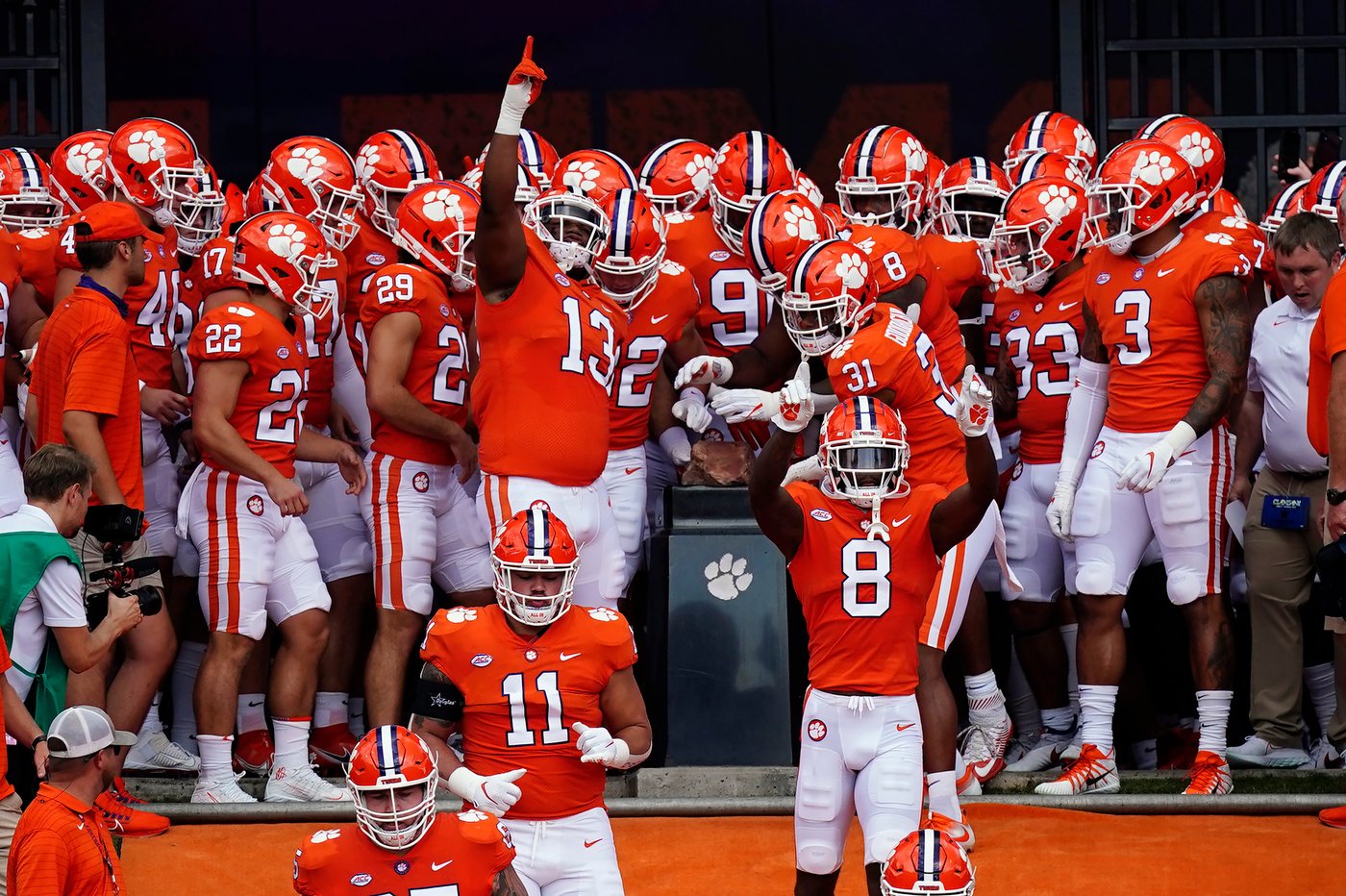
CLEMSON, S.C. (AP) — Hunter Renfrow snagged the game-winning touchdown in the College Football Playoff national championship game, was selected in the fifth round of the NFL draft and even made the Pro Bowl.
But he said few things in his football career will ever compare to the chills he got from touching Howard’s Rock and running down the steep grass hill and onto the playing surface at Memorial Stadium before every Clemson home game.
“I mean, 80,000 people screaming,” Renfrow said. “I think it’s one of the best traditions in college football.”
The rock is a big part of that tradition. It is a literal totem, one of the most well-known across college football along with the likes of the “Play Like a Champion Today” signs at Oklahoma and Notre Dame and the M Club banner at Michigan.
Given to former Tigers coach Frank Howard by a friend who picked it up in Death Valley, California, it was first used as a doorstop in Howard’s office. Howard hated the rock at first. But members of the athletic department decided to place it on a pedestal on top of “The Hill” above the east end zone on the first concourse level on Sept. 24, 1966, several hundred feet above the playing surface.
Clemson went on to beat Virginia 40-35 that day, and the tradition was born of the rock that had “mystical powers.” Clemson players began rubbing Howard’s Rock for their home opener in 1967, a 23-6 win over Wake Forest.
Over the years the tradition has evolved.
After warmups, Clemson players now leave the field, where they privately place poker chips into a bucket — they get one for each game they’ve played at Clemson — signaling they are, as current coach Dabo’s Swinney describes it, “all in.”
They then board buses — one each for offense, defense and special teams — and are driven around the stadium to the east end of the field with images of their arrival captured on the video scoreboard for a crowd growing increasingly hyped for the team’s arrival.
By the time the players emerge from the bus, Death Valley has become as loud as any college stadium in the country.
“The chips say, ‘I’m ready to sacrifice,’” Renfrow said. “They say, ‘I’m ready to give a little bit, you know, give a little for your brother, give a little to the team.’ You’re giving everything you got.”
Sometimes making it down the steep hill takes everything you’ve got.
After the team gathers together around the rock, they each take turns touching the rock and when the signal is given starting jogging down the hill, past a tricky, short flat surface and then down the rest of the hill and onto the field.
“The problem is people get halfway when it when it goes level and they jump. But you know they do a 2-foot jump in the air and it’s 3-foot down, so it’s really a 5-foot jump. So you’ve got broken ankles, you got twisted ankles, hopefully not too many,” Renfrow said with a laugh. “But you know it’s great experience, and one that makes you be proud to be a Tiger.”
The sign
Clemson isn’t the only football program to place its hands on an object before the game and Notre Dame isn’t the only school to lay claim to a “Play Like A Champion Today” sign.
Oklahoma contends the first placard appeared in the late 1940s when Hall of Fame coach Bud Wilkinson in the 1940s placed it near the Sooners’ locker room.
Whatever the origination, though, Notre Dame — with the help of television cameras — has turned the slapping of its sign before games into yet another chapter in a history full of lore. From Touchdown Jesus to Knute Rockne’s “Win one for the Gipper” speech, occasionally swapping out blue jerseys for green ones to restore the luck of the Irish, true fans know the stories, moments, images and personalities that define these Golden Domers.
The sign is relatively new. Former coach Lou Holtz had it installed in the stairwell leading from the team’s locker room to the tunnel at Notre Dame Stadium in 1986. He said he found the sign in a library book while doing some homework on the school’s history. Two years later, the slap became synonymous with the Irish as they won the national championship.
The tradition stuck and today’s players cherish it every bit as much as they do other parts of the Notre Dame mystique.
“Every time you touch that sign that’s when you know it’s game time, get ready for the reward,” linebacker Jaiden Ausberry said. “Everybody does it a little different, how they attack it, put their signature on it. But it definitely, definitely means something to tap that sign.”
___
AP Sports Writer Mike Marot in Indiana contributed to this report.
___
Get poll alerts and updates on the AP Top 25 throughout the season. Sign up here and here (AP News mobile app). AP college football: https://apnews.com/hub/ap-top-25-college-football-poll and https://apnews.com/hub/college-football
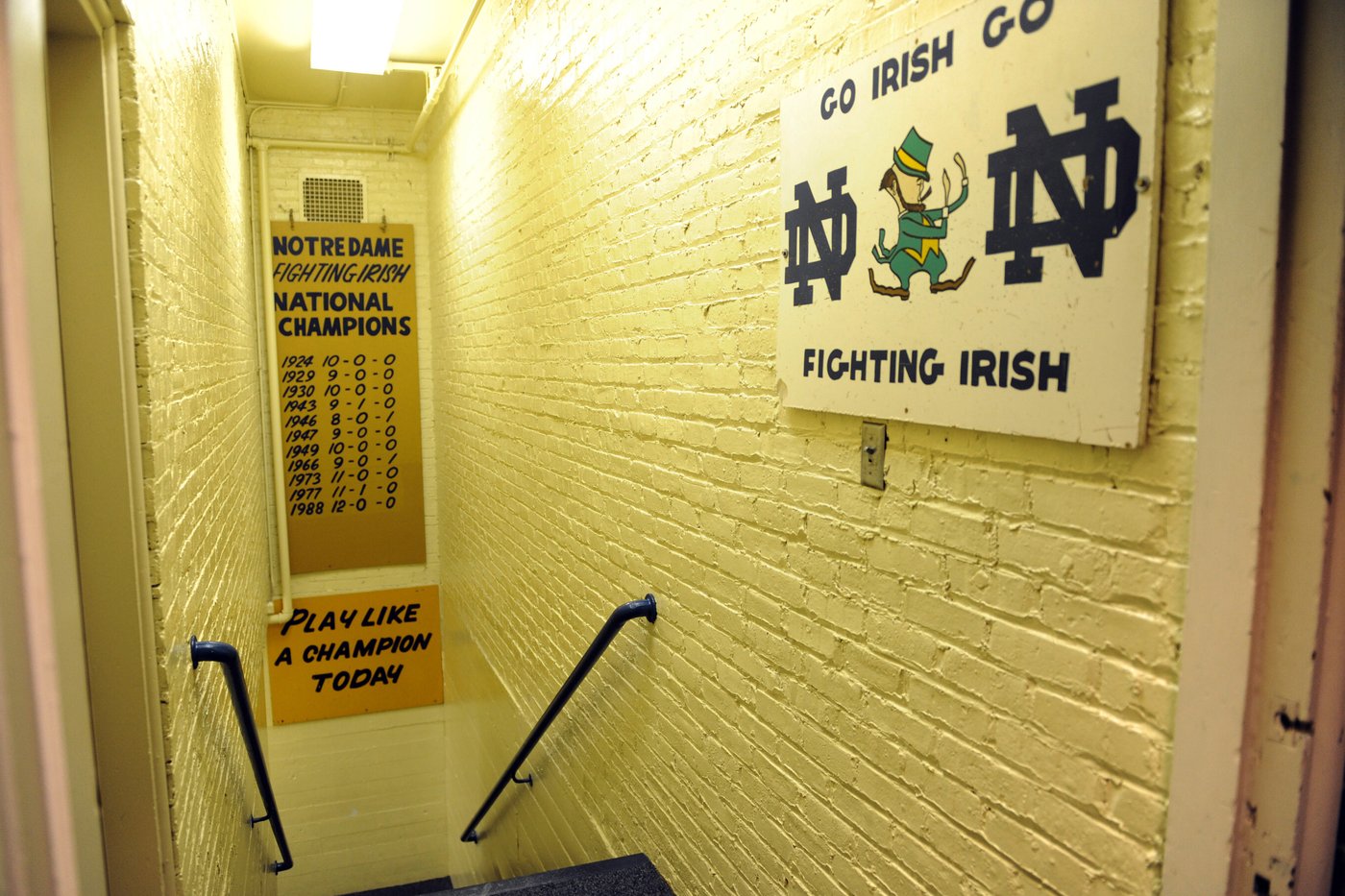
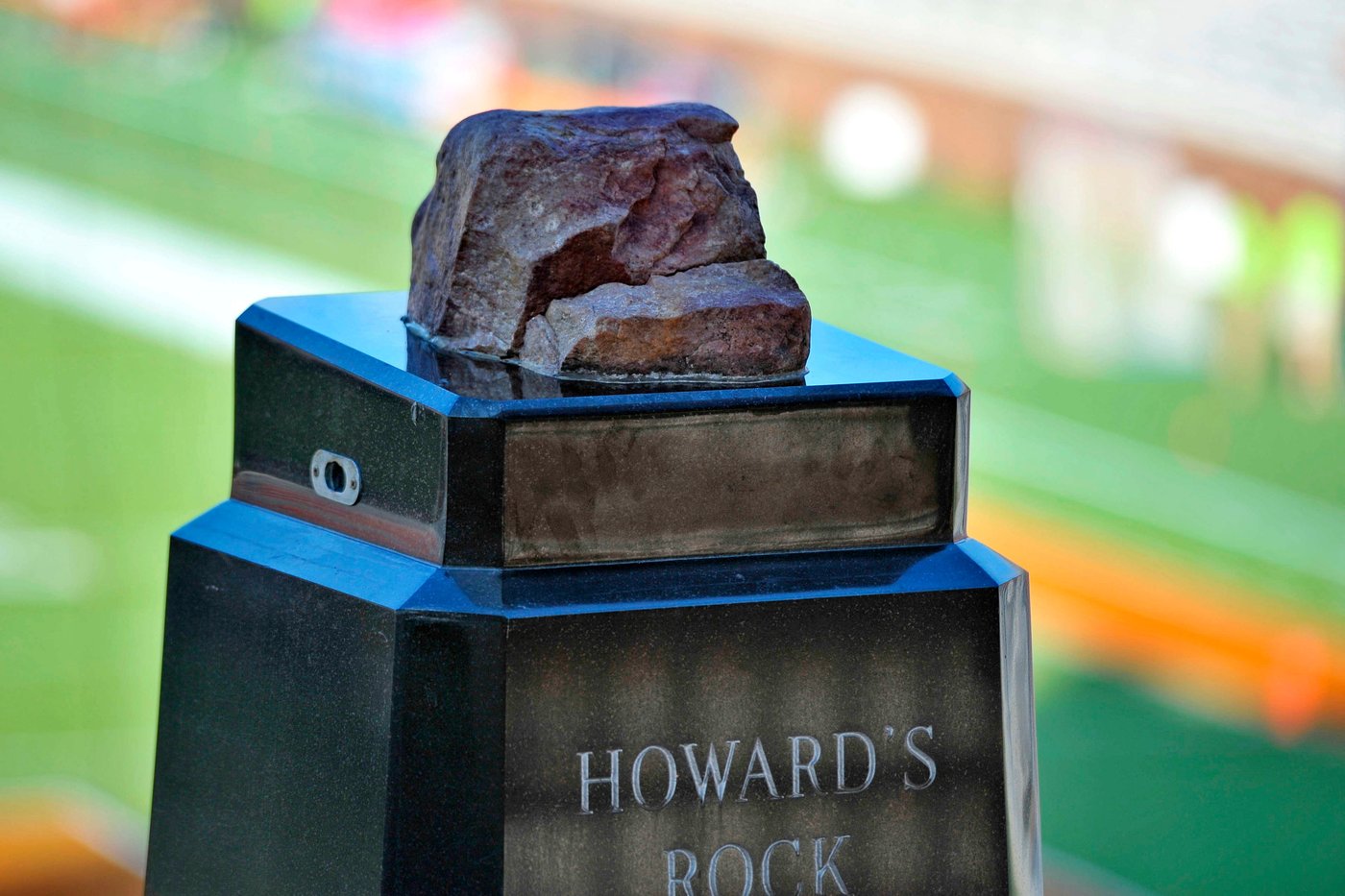
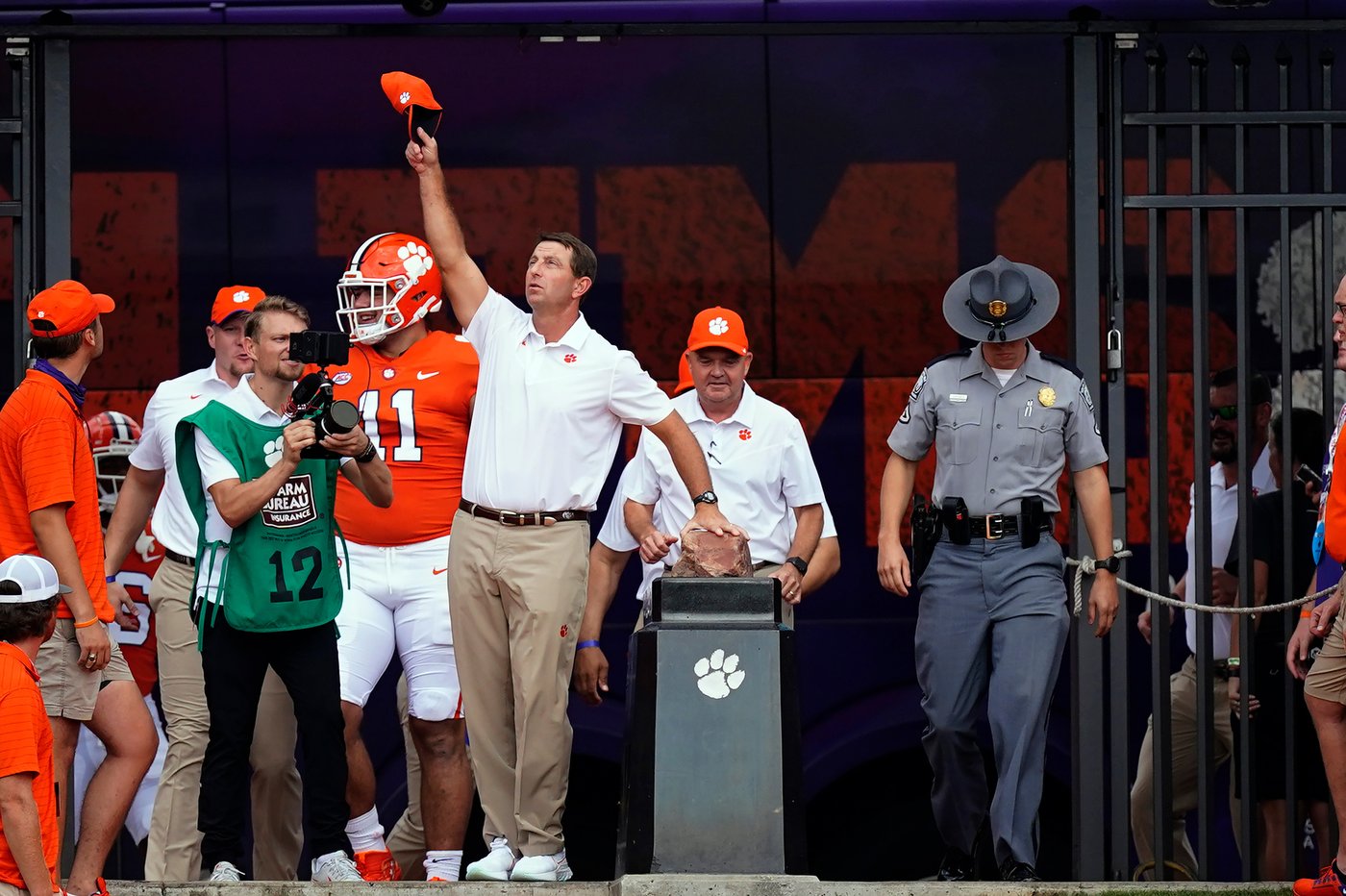
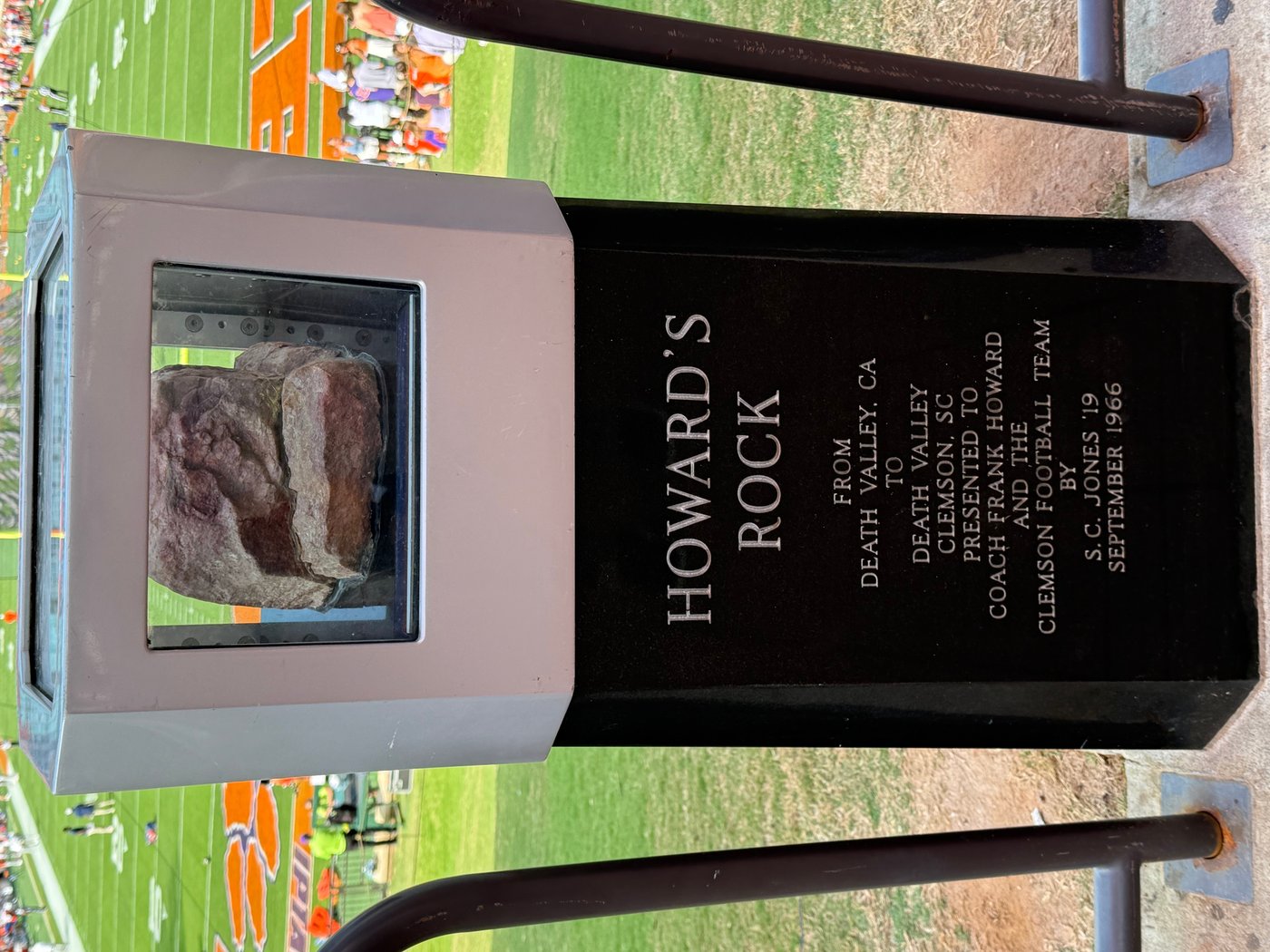
Want to share your thoughts, add context, or connect with others in your community?
You must be logged in to post a comment.